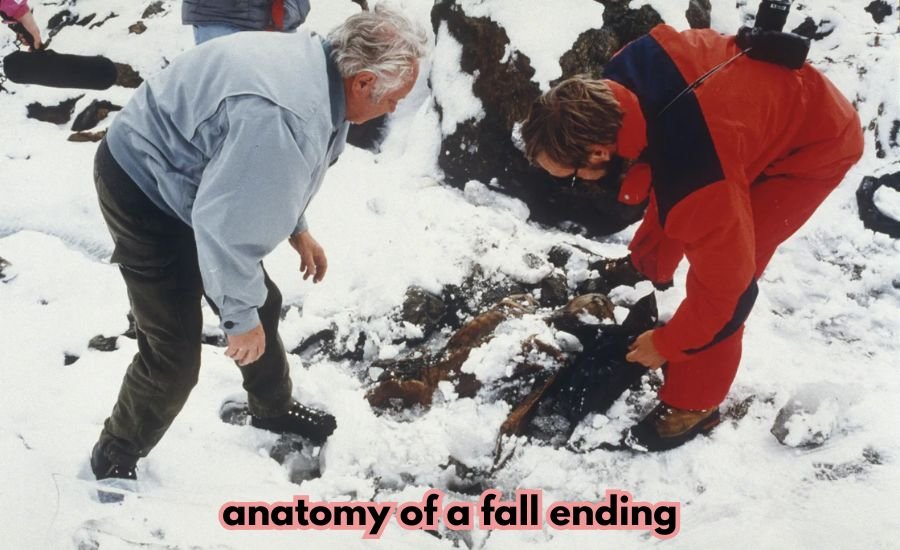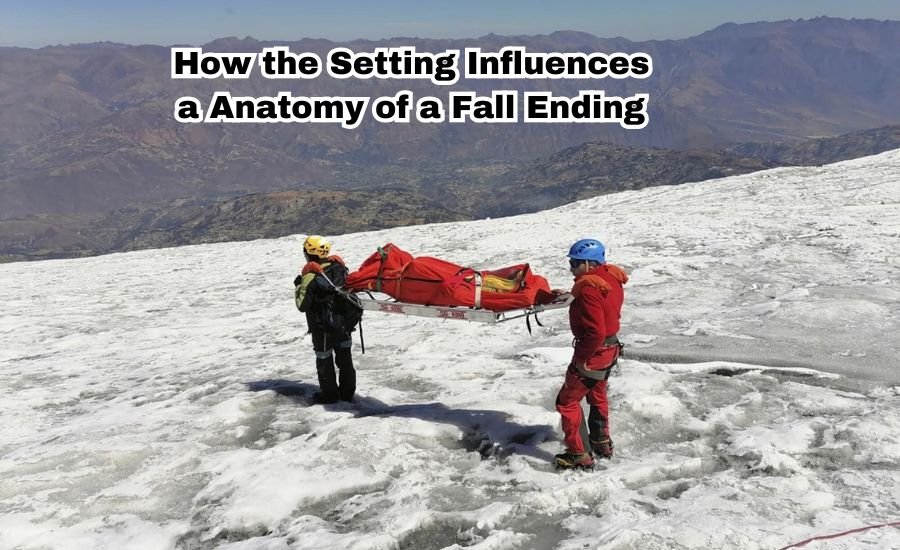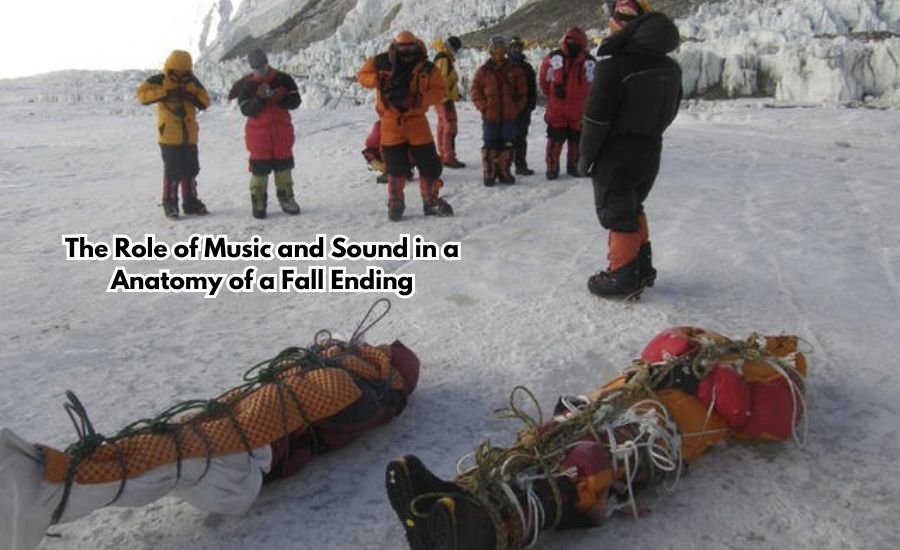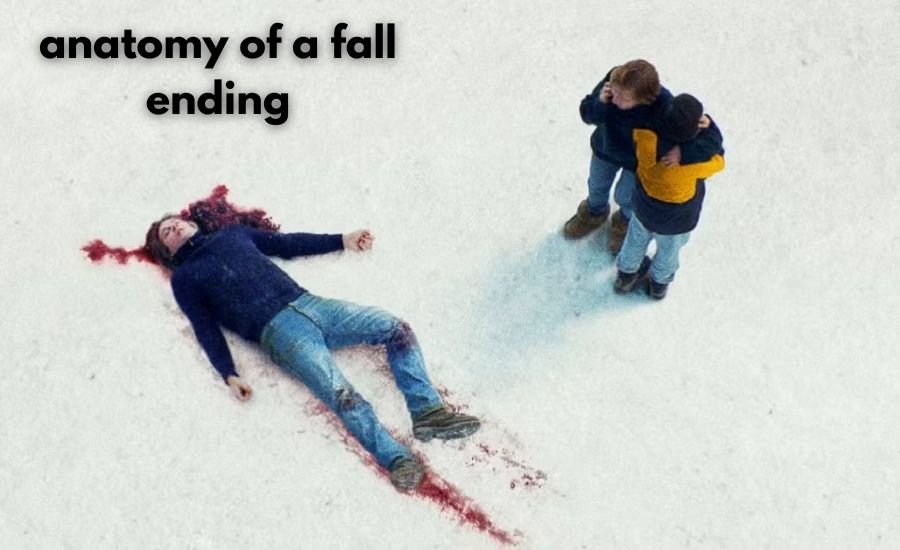The anatomy of a fall ending can be mysterious and puzzling. When we reach the end of a story, especially one filled with suspense, we often wonder, Why did it end this way? This question is common for movies and books where the ending isn’t clear. For fans of thrilling stories, figuring out an ending is like solving a big puzzle each piece needs to fit just right. Understanding the ending can help us feel satisfied and make sense of the story’s journey.
In anatomy of a fall ending, we explore the moments that led up to the final scenes. The characters, their choices, and the events all build up to that last moment. This kind of ending often has twists, hidden clues, and unexpected turns that make us think twice. In this blog, we will discuss why certain choices were made, what hidden clues were revealed, and how everything finally came together in the end. So, let’s dive in and uncover the mystery of this unique ending.
What Is the Anatomy of a Fall Ending?

The anatomy of a fall ending refers to the way a story reaches its final moments. It is how everything that happens earlier in the plot leads to a big reveal or twist. These endings often leave us thinking long after the story ends. They are mysterious, surprising, and sometimes even shocking.
At the heart of this kind of ending is the way clues are hidden throughout the story. These clues can seem unimportant at first, but when combined, they show the true picture of what’s going on. In the anatomy of a fall ending, everything makes sense when we look at the ending closely, like putting together pieces of a puzzle.
So, next time you watch a movie or read a book with a fall ending, try to remember the little details. These moments help explain the bigger picture. The final scenes often leave us with more questions, but they also give us the answers we need when we think carefully.
Why Does a Anatomy of a Fall Ending So Surprising?
A fall ending often feels surprising because it takes us in a direction we didn’t expect. The anatomy of a fall ending works by building tension and making the story feel one way, only to suddenly shift. This surprise factor is what makes these endings so memorable.
When stories are set up in a way that makes us think we know what will happen, the ending flips everything around. This unexpected change makes the story feel fresh and exciting. It’s like being caught off guard but in a way that feels right.
In the anatomy of a fall ending, everything that happens earlier prepares us for that surprising twist. The characters’ actions, their mistakes, and the events all seem to line up in a way that creates suspense. When the ending is finally revealed, it doesn’t feel forced or out of place. Instead, it leaves us feeling amazed at how everything fits together.
How Does the Build Up Affect the Anatomy of a Fall Ending?
The build up to a fall ending is crucial. It sets the stage for the anatomy of a fall ending to have maximum impact. In many stories, things seem calm or straightforward, but the build up hides the deeper truths. This slow, careful build creates a strong foundation for the final twist.
When we get closer to the end, the tension builds. Little clues start to appear, but we don’t notice them at first. The final moments of the story feel different from what we expected because the build up carefully sets the tone. It’s like walking down a path that seems safe, only for something unexpected to happen.
The anatomy of a fall ending works best when this build up is done well. If the story has been leading us down one path, the twist at the end will feel even more powerful. This build up makes the fall ending feel both surprising and inevitable.
What Role Do the Characters Play in the Anatomy of a Fall Ending?
The characters are often the key to understanding the anatomy of a fall ending. Their choices, mistakes, and personal growth directly lead to the story’s conclusion. These characters may not always make the best decisions, but those decisions shape the events that follow.
In many fall endings, characters are forced to face the consequences of their actions. These moments reveal their true selves and the impact of their choices. For example, a character might make a sacrifice that brings the story to a surprising close, showing their growth throughout the story.
The anatomy of a fall ending often depends on how these characters evolve. Their journey, filled with mistakes, decisions, and discoveries, guides the plot towards its unexpected conclusion. In the end, it is the characters who help explain why things happened the way they did.
The Impact of Foreshadowing in a Anatomy of a Fall Ending
Foreshadowing plays a big role in the anatomy of a fall ending. It’s when a story gives us hints about what will happen later, even though we might not notice them at first. These early clues are like little breadcrumbs that lead us to the final twist.
When foreshadowing is done well, it makes the ending feel natural, even if it’s surprising. The key to understanding a fall ending is realizing how the earlier events connect to the final moments. The clues may seem small, but when we look back, they explain the unexpected outcome.
Foreshadowing works best in the anatomy of a fall ending when it isn’t too obvious. If the story gives away too much, the twist won’t be as effective. But when the foreshadowing is just right, it makes the ending feel satisfying and meaningful.
How the Setting Influences a Anatomy of a Fall Ending

The setting of a story often influences how a fall ending plays out. The anatomy of a fall ending depends on the environment where the characters live and the events unfold. Whether it’s a spooky house or a busy city, the setting can shape how everything comes together in the end.
In many stories with a fall ending, the setting plays a role in creating tension and suspense. Dark, quiet places can make a surprise ending even scarier. The place where the final scenes happen is often the last piece of the puzzle that helps explain the twist.
The setting can also add to the meaning of the ending. For example, if the fall ending happens in a place that holds important memories for the characters, it makes the conclusion more emotional. The anatomy of a fall ending is incomplete without considering the power of the setting.
What Makes a Anatomy of a Fall Ending Different from Other Endings?
Fall endings stand out because they have a unique way of surprising the audience. The anatomy of a fall ending focuses on creating a sense of suspense that builds up to a shocking or unexpected twist. Unlike other endings that feel predictable or satisfying in a clear way, a fall ending keeps us guessing.
In traditional endings, everything often feels resolved, and we get the answers we were looking for. But in fall endings, the final moments leave us with more questions than answers. This open ended nature is what makes these types of endings so powerful.
The anatomy of a fall ending uses this sense of uncertainty to create tension. It’s different from other endings because it doesn’t offer all the answers. Instead, it challenges the audience to think deeply and reflect on what happened, long after the story ends.
Can You Predict a Anatomy of a Fall Ending?
Predicting a fall ending can be tricky because these types of endings often come with a twist. The anatomy of a fall ending depends on misdirection and surprise, which makes it hard to guess the outcome. However, by paying attention to small details, we can sometimes spot clues that hint at the final twist.
One way to predict a fall ending is to look for patterns in the story. Are there moments where something feels off or too perfect? These can be signs that something big is about to happen. But even with these clues, the twist is often still surprising.
In the anatomy of a fall ending, even the best predictions can feel wrong. That’s what makes these stories so fun. The twist challenges our expectations and forces us to see things in a new way, making the ending both unexpected and unforgettable.
Crucial Point You Must Understand: Angels-mystical-beings-of-hope-and-light
Why Are Anatomy of a Fall Ending So Popular?
Fall endings are popular because they keep the audience engaged and excited. The anatomy of a fall ending creates a sense of suspense that makes us want to keep watching or reading. These endings don’t just tie everything up in a neat little bow; they leave us thinking and questioning what just happened.
The surprise element of fall endings makes them thrilling. People love the excitement of not knowing what will happen next. As a result, these types of endings keep us on the edge of our seats, eager to find out what comes next.
The anatomy of a fall ending also connects with audiences emotionally. By keeping the story open ended or leaving loose threads, these endings make us care about the characters and their journey. It’s this emotional connection that makes fall endings so memorable.
How to Understand a Anatomy of a Fall Ending After It Happens
After watching or reading a story with a fall ending, it’s important to take time to think about what happened. The anatomy of a fall ending often includes a moment where everything changes, and it can be hard to understand at first. To make sense of it, we need to look back at the entire story.
Sometimes, it helps to rewatch or reread certain parts of the story. This way, we can see how the clues build up and connect to the final moments. Understanding the fall ending often involves reflecting on the characters’ choices and how those led to the surprising conclusion.
The anatomy of a fall ending isn’t always easy to understand right away. But by thinking about the story as a whole and recognizing the patterns, we can appreciate how the ending was crafted. It’s a rewarding experience to understand these endings after the story has finished.
The Emotional Impact of a Anatomy of a Fall Ending
The emotional impact of a fall ending is one of its strongest qualities. The anatomy of a fall ending can evoke a wide range of emotions, from shock to sadness to relief. These endings often leave a lasting impression on the audience, making them feel deeply connected to the story.
Because of the twist or surprise, these endings can trigger a strong emotional response. We might feel confused, excited, or even heartbroken, depending on how the story concludes. This emotional rollercoaster is what makes fall endings so unforgettable.
In the anatomy of a fall ending, emotions play a key role in how the twist is received. The emotions tied to the final scenes make the ending feel even more powerful. By connecting with the audience on an emotional level, fall endings leave a lasting mark.
The Role of Music and Sound in a Anatomy of a Fall Ending

In many stories with fall endings, music and sound play a huge role in setting the mood. The anatomy of a fall ending is often enhanced by how music or sound is used in the final moments. Music can help build tension, create suspense, or even highlight the surprise of the twist.
For example, a quiet moment in a story may be followed by a sudden loud sound, which adds to the shock of the ending. The right sound effects or music cues can also help guide the audience’s emotions, making the final twist even more dramatic.
The anatomy of a fall ending isn’t just about the plot or the characters; it’s about the atmosphere too. Music and sound help to build the right atmosphere, creating a sense of tension that makes the ending feel even more impactful.
Exploring Different Types of Anatomy of a Fall Ending
There are many different types of fall endings, and each one has its own unique style. The anatomy of a fall ending can vary based on the genre and tone of the story. Some endings are happy and uplifting, while others are dark and tragic.
In some stories, the fall ending may reveal a hidden truth that changes everything. In others, the ending may be more ambiguous, leaving the audience to make their own conclusions. The variety of fall endings makes this storytelling style so interesting and diverse.
The anatomy of a fall ending gives writers and creators the freedom to explore different emotional and narrative paths. This variety is what makes fall endings so exciting and unpredictable.
Conclusion
In conclusion, the anatomy of a fall ending is a powerful storytelling technique that surprises and engages audiences. These endings build up suspense and tension throughout the story, leading to a twist that no one saw coming. What makes them so special is how everything connects in the end, even if it feels unpredictable at first. It’s like a puzzle where all the pieces finally fit, leaving us with a sense of wonder and excitement. Whether it’s a movie, book, or any other kind of story, fall endings keep us hooked and make the experience unforgettable.
The beauty of a fall ending is that it challenges our expectations and encourages us to think differently about the story. By paying attention to the clues along the way, we can better understand how the twist works. But even if we can’t predict it, that’s what makes these endings so fun and thrilling. They remind us why we love stories in the first place – because they can surprise us and make us feel something new. So, the next time you experience a fall ending, take a moment to reflect on how everything comes together in the end – it’s always more than just a twist, it’s a journey.
You Should Be Aware Of: Life-after-death
FAQs
What is a Anatomy of a Fall Ending?
A fall ending is a twist in a story where everything seems to lead one way, but the ending surprises us by completely changing things. It’s like a sudden turn in the plot that catches the audience off guard.
Why are Anatomy of a Fall Ending so popular in storytelling?
Fall endings are popular because they create excitement and surprise. They challenge the audience’s expectations and make the story unforgettable by giving it an unexpected twist at the end.
How do fall endings affect the audience’s emotions?
Fall endings often create strong emotional reactions by shocking the audience. They can make us feel surprised, confused, or even sad, but always leave us thinking about the story long after it ends.
Can fall endings be happy or sad?
Yes, fall endings can be both happy or sad. Some stories end with a joyful twist, while others may have a sad or tragic surprise. It depends on the tone and theme of the story.
Are fall endings used in all types of stories?
Fall endings can be used in almost any type of story, from books to movies to TV shows. However, they are more commonly found in thrillers, mysteries, and dramas where surprise is important.
How can writers create an effective Anatomy of a Fall Ending?
Writers can create an effective fall ending by planting subtle clues throughout the story without giving too much away. This helps make the twist feel surprising yet believable when it happens.
What makes a fall ending different from other twists?
A fall ending is unique because it not only surprises the audience but also forces them to rethink everything they’ve seen in the story. It’s not just a simple plot twist; it changes the entire perspective.
Can a fall ending ever be predictable?
While fall endings are meant to be surprising, skilled storytellers can sometimes make them predictable. However, the best fall endings still manage to feel fresh and impactful, even if there are hints along the way.
Is the fall ending always a good thing for a story?
Not always. If a fall ending feels forced or doesn’t fit the story well, it can confuse or disappoint the audience. A well crafted fall ending, though, adds depth and excitement to the narrative.








